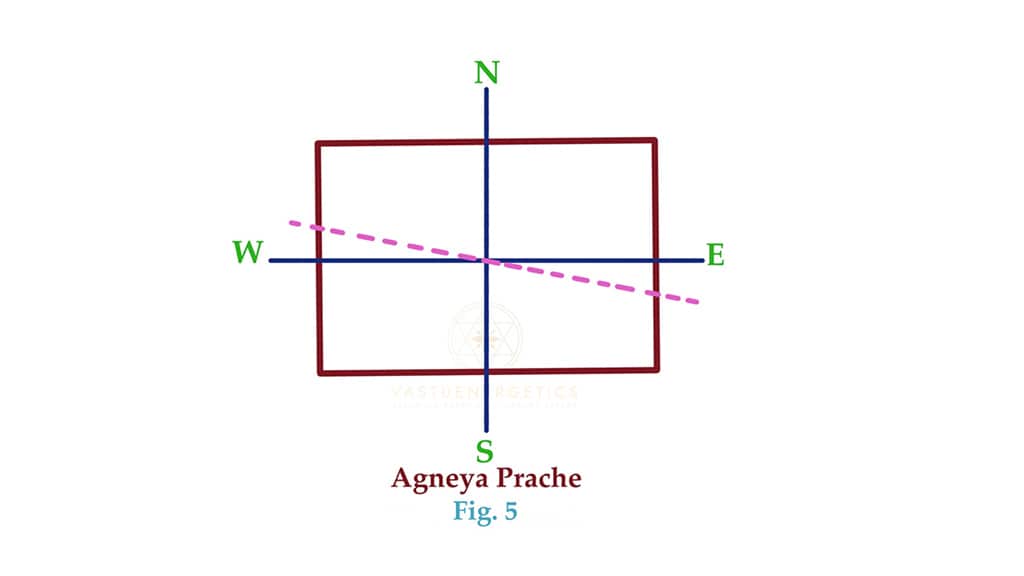On March 21st, the Sun is directly opposite and closer to the Earth’s surface and the flow of energy and its energy field will be the maximum. Not only that, the day and night are of equal lengths.
As per Vedic science, from that day, the Sun moves upward and thereafter downward at fixed time intervals. The upward Northward movement is called “Uttarayana” and that of the downward – Southward movement is called “Dakshinayana”. According to Vastu texts, this shows the two latitudinal extremities of the Sun’s movement.
The uppermost point is called “Summer Solstice” or “Kataka Rekha” which is on June 21st and the lowermost point is called the “Winter Solstice” or “Makara Rekha” which is reached on December 21st.The time taken by the Sun to cross the equatorial line called “Bhumadhya Rekha” is termed as “Equinox”. This line of demarcation separates the sphere into upper and lower hemisphere and is significant and most important to Vastu science. (Fig. 1)
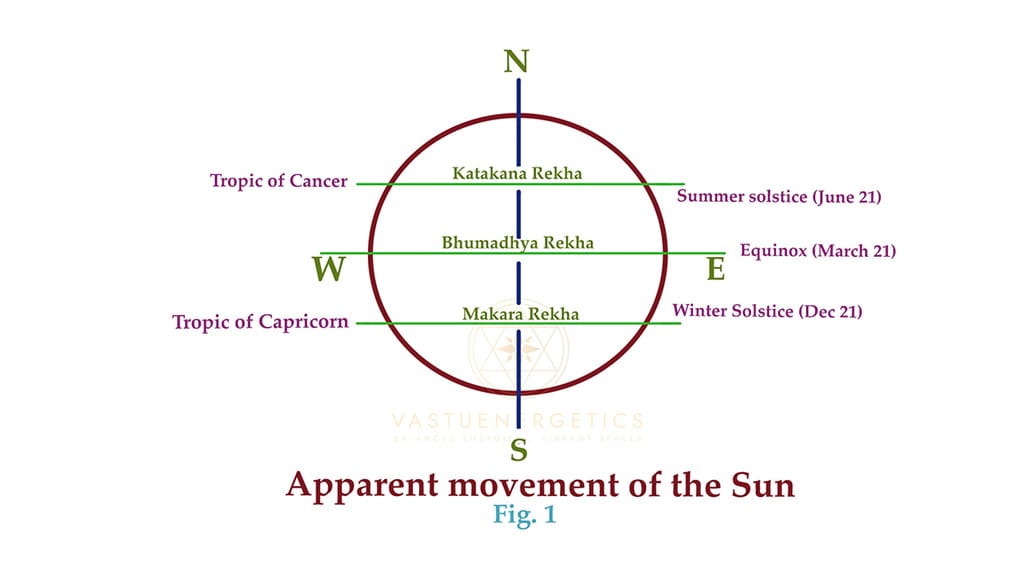
It is pertinent to note that the Sun touches the equatorial line again on September 23rd during the course of its downward movement. The time taken is 6 months from March 21st to September 23rd and this is the period of Summer.
Vastu science calls horizontal line or “Bhumadhya Rekha” that runs east-west of the Earth in technical parlance as “Suddha Prache” or “True East”. The perpendicular lines to the True East-west are “True-North and “True-South” respectively.
These are commonly known as Cardinal Directions in Vastu parlance. (Fig. 2)
Let us now delve upon the “Brahma Sutra” and “Soma Sutra” lines.
The “Brahma Sutra” lines meaning “thread of energy” or “thread of light” are straight lines that are formed due to the meeting of “Prache Sutra” – line emanating from the centre of the earth and passing through the equator meaning the east line and “Pradechi Sutra”- meaning the west line.
The perpendicular line which is drawn from the centre is called “Soma Sutra”.(Fig. 2)
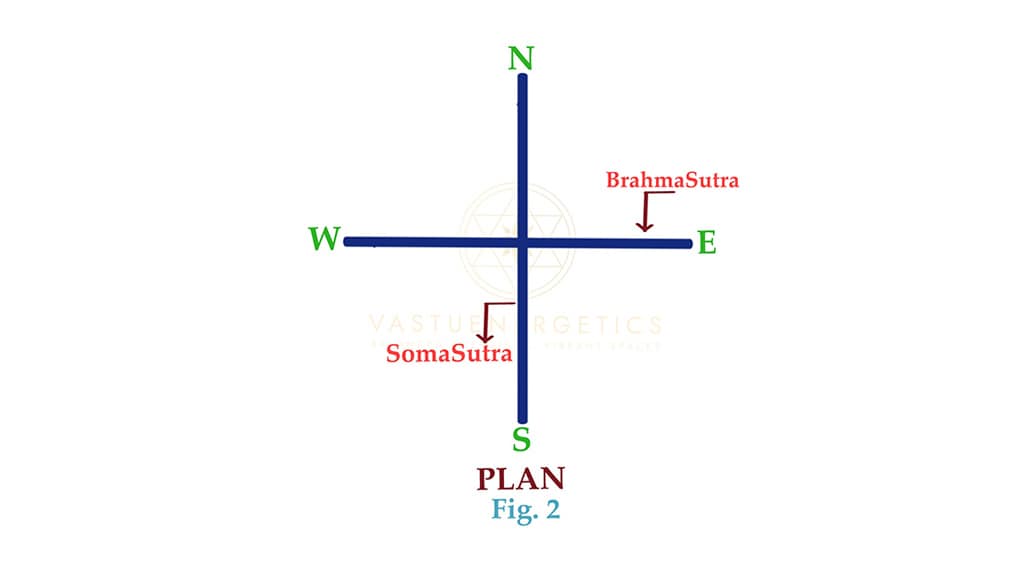
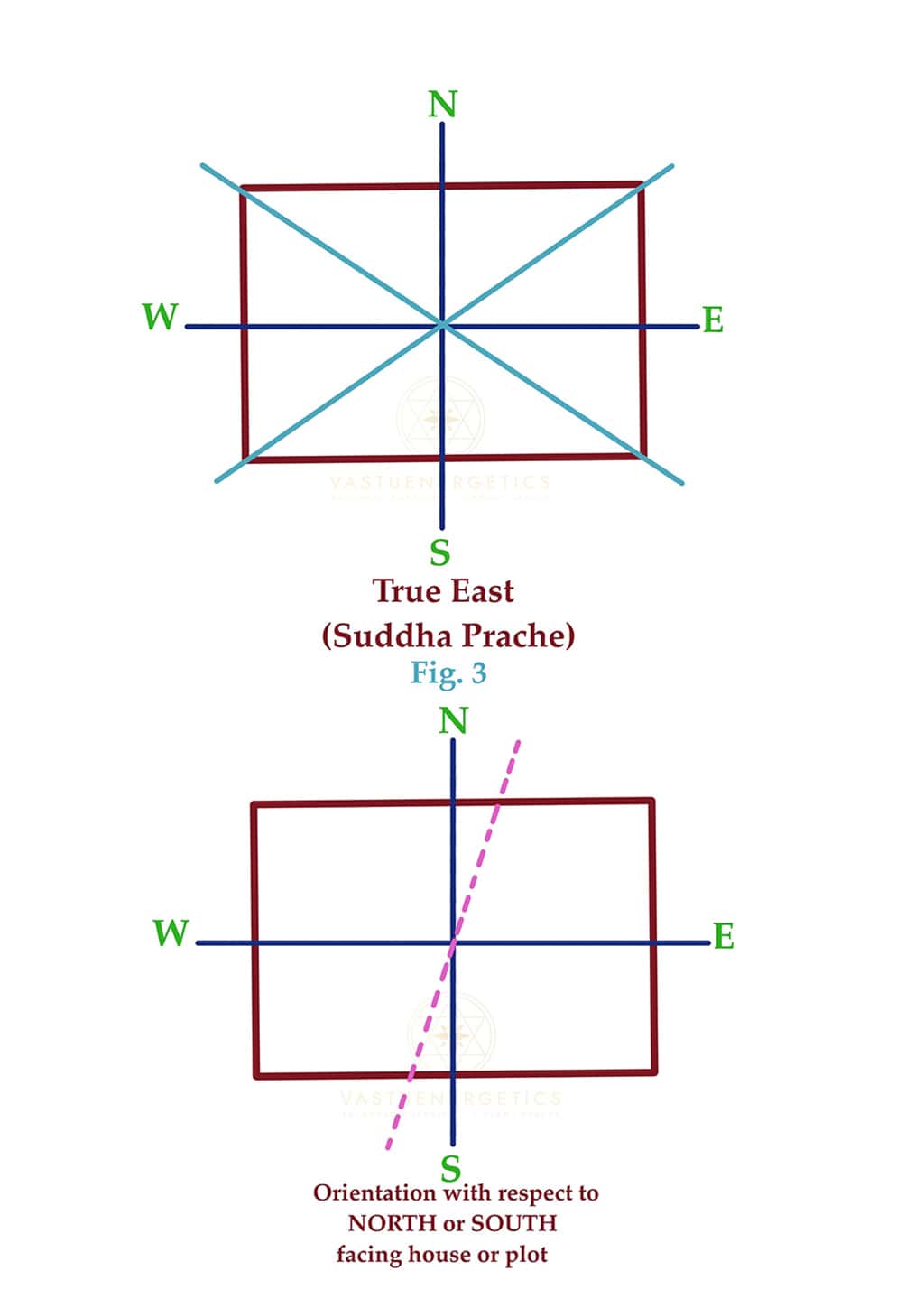
“Mukti kaamasya karne suddha pracheem prayojayet”
“Ishaanya pracheem sarvasya bhoga kaamasya sammata”
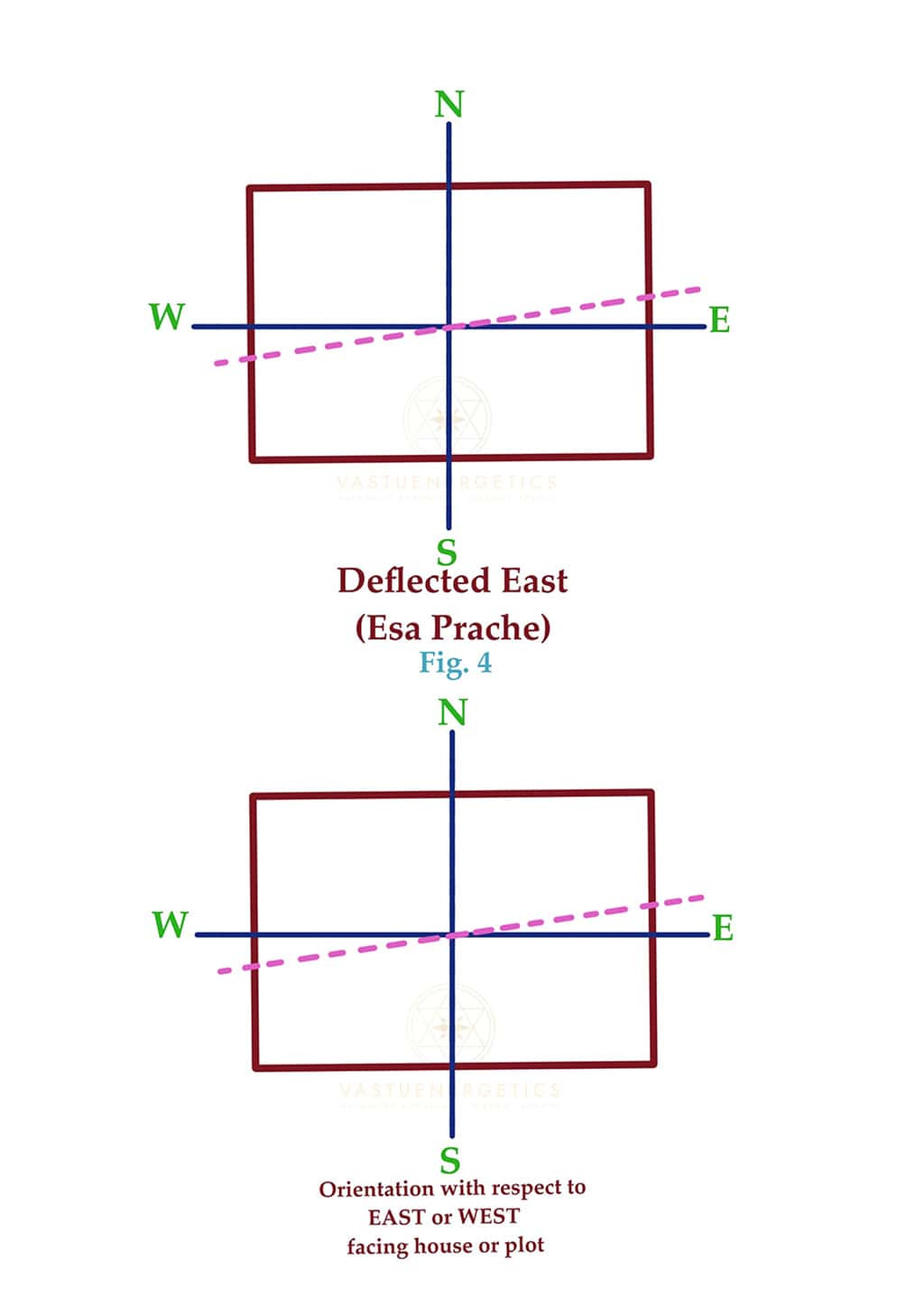
“Agneya prachikam vastu tasmat sarvam vivarjayet”
There is another very important rule such that buildings should not face the East-West line called “Agneya Prache” which is turned towards the South-east point as it invites negative harmful effects on human life. (Fig. 5)
